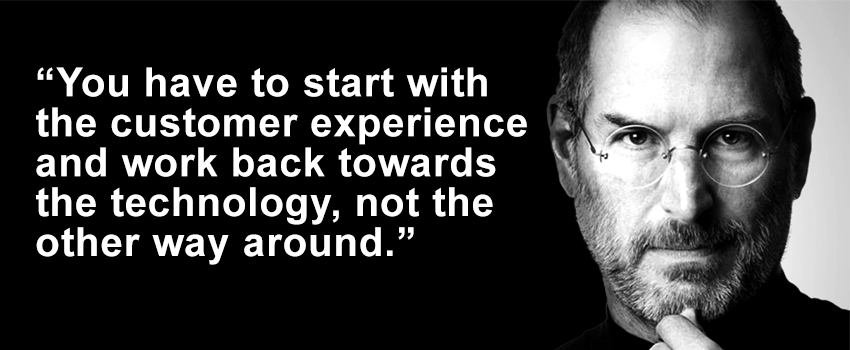
ITSM BASICS: 5 TIPS FOR BETTER SLAs
In my previous blog, I wrote about how to recognize and deal with the issues associated with watermelon service level agreements (SLAs). Now, with this blog, I want to offer further help, looking at how to implement SLAs, and targets, that drive the right behaviors and focus on better customer relationships and end-user experiences.
So please read on for my 5 tips for better SLAs…
1. Involve the Business in SLA Creation/Improvement
One of the biggest mistakes organizations make when drafting SLAs is to not involve the business people (IT service customers and consumers) enough. This might be a number of different stakeholders – from the people “who pay the bills” to those that are reliant on IT services on a day-to-day basis.
So, really talk with your stakeholders to get their version of “what good looks like,” as well as understanding any concerns about, or gaps in, the current service offerings. It’s also worth understanding what already works well because there might be an opportunity to do better still.
By talking directly with your customers, and asking for feedback on the status quo and potential changes, you can look at what’s working, capture any opportunities for improvement, and ensure that any important gaps or issues are addressed.
2. Make your SLAs “SMART”
You might have heard of the “SMART metrics” approach before. This is how it can be applied to SLAs:
- Specific – Talk to your customers and clearly spell out the service definition, i.e. what using the service will look like day to day. Plus, who will support it, the supported hours, and where end users will go for help. For instance, is there a self-service offering?
- Measurable – How will service levels be measured? Things to consider here could include:
- Availability and uptime
- Performance, for example transaction or page loading times
- Maintenance windows
- How defects are managed
- Achievable – Is it possible for the targets set in the SLA to be reliably and regularly achieved? And don’t just set targets for the sake of it. If you’re unsure as to what would be appropriate, work with your support teams and your customers to collectively agree on a reasonable target.
- Relevant – Are the targets, which are listed in the SLA, relevant to the rest of the organization? Does meeting the SLA performance measures enable the business to achieve their goals and objectives? It’s important to make sure that the targets set in the SLA mirror the mission or objective of your organization, linking in to the overall business goals.
- Time-based – Do the targets include the timescale over which they should be tracked, measured, and reported. What are the reporting periods? Monthly? Quarterly? And how often should review meetings be held?
3. Tie in OLAs and Underpinning Contracts
For your SLAs to be truly effective, they need to be supported by the right operational level agreements (OLAs) and underpinning contracts (UCs).
Too many organizations think that because an SLA has agreed on a two-hour fix time for major incidents, this is what will actually happen. But the issue is that if another support team or third-party needs to assist, they might not have the same timescales if their OLAs and/or contracts are different. The two-hour fix is therefore not an enforceable deliverable.
So, when drafting your SLAs, talk to your service delivery managers and supplier management teams to ensure that your SLAs have enough time to deliver the agreed services taking into account the related OLAs and UCs.
Also bear in mind that you’ll need to allow for extra time for handoffs and for the IT service desk to manage communications. So, make sure that you factor this in when drafting your SLA documents. Plus, don’t forget to ensure that the contact details for all interested parties are highlighted, as well as any escalation points!
4. Shift the Focus
I’ve already written about focusing on the right things to drive the right behaviors. A way to take this further is to consider adding XLAs (or customer eXperience level agreements).
While SLAs are needed to keep the service on track, they mainly focus on the technical details that aren’t directly relatable to the business. Whereas XLAs are a way of gauging how customers feel about using a product or service in an attempt to improve the overall service experience. As Steve Jobs explained it:

When looking at XLAs, an easy way to start is to look at your overall Net Promoter Score (NPS). Your NPS is a measure of how likely your customers are to recommend you or to renew a contract. Put simply, NPS is calculated based on responses to a single 0-10 scale question: How likely is it that you would recommend our company/product/service to a friend or colleague?
Anyone with a score of 9 or 10 is a promoter, anyone with a score of 6 or under is a detractor. With NPS an effective way to take a snapshot of how your customers are experiencing your service that can be built on to strengthen your SLAs and, more importantly, the overall relationship you have. Because by understanding and building empathy, you can truly represent the voice of the customer.
5. Build in CSI
Stay proactive – actively look for ways of improving service levels and anticipating changing service requirements, be it large-scale improvement projects or by making marginal gains.
A useful way of incorporating continual service improvement (CSI) into your SLAs is to have an agenda item for improvement at each service review meeting. It doesn’t need to be complicated though. Sometimes by simply asking the question: “If there was one thing you could change about this service to make it better, what would it be?”
Plus, by building CSI into your SLAs you’re making the statement that quality is inherent in every aspect of your IT service delivery and that the overall level of customer satisfaction is important to you.
Overall…
Done well SLAs can be the difference between good and great service. They can ensure that: IT services are clearly understood by all parties in a common language, the right things are being measured and achieved, and issues are handled in a timely manner (rather than being delayed and then escalated). A good SLA will not only open up communication but also improve the relationships between IT and its customers/consumers/partners. These customers, end users, and tech support teams all deserve so much more than broken watermelon SLAs, so let’s get to work!






